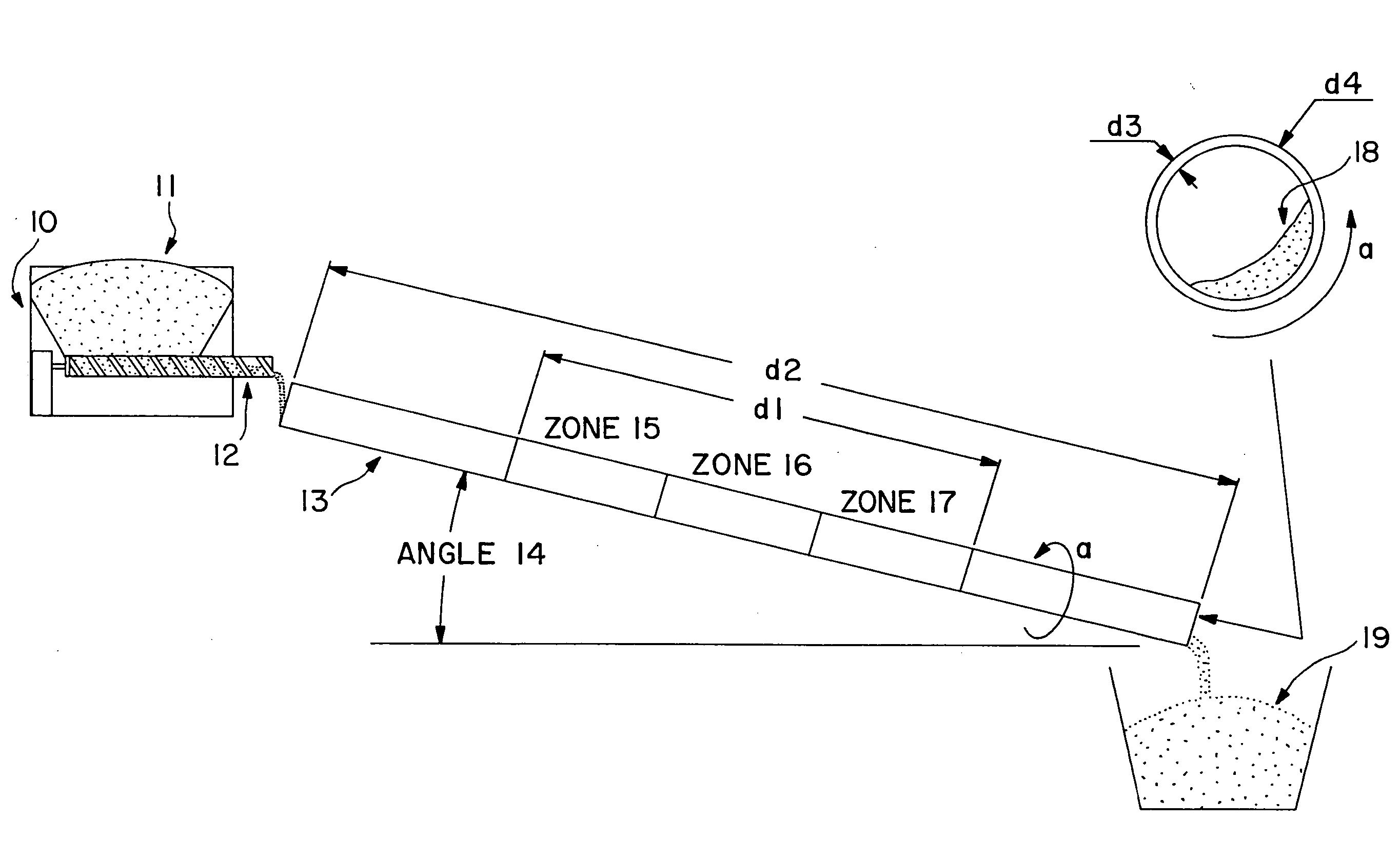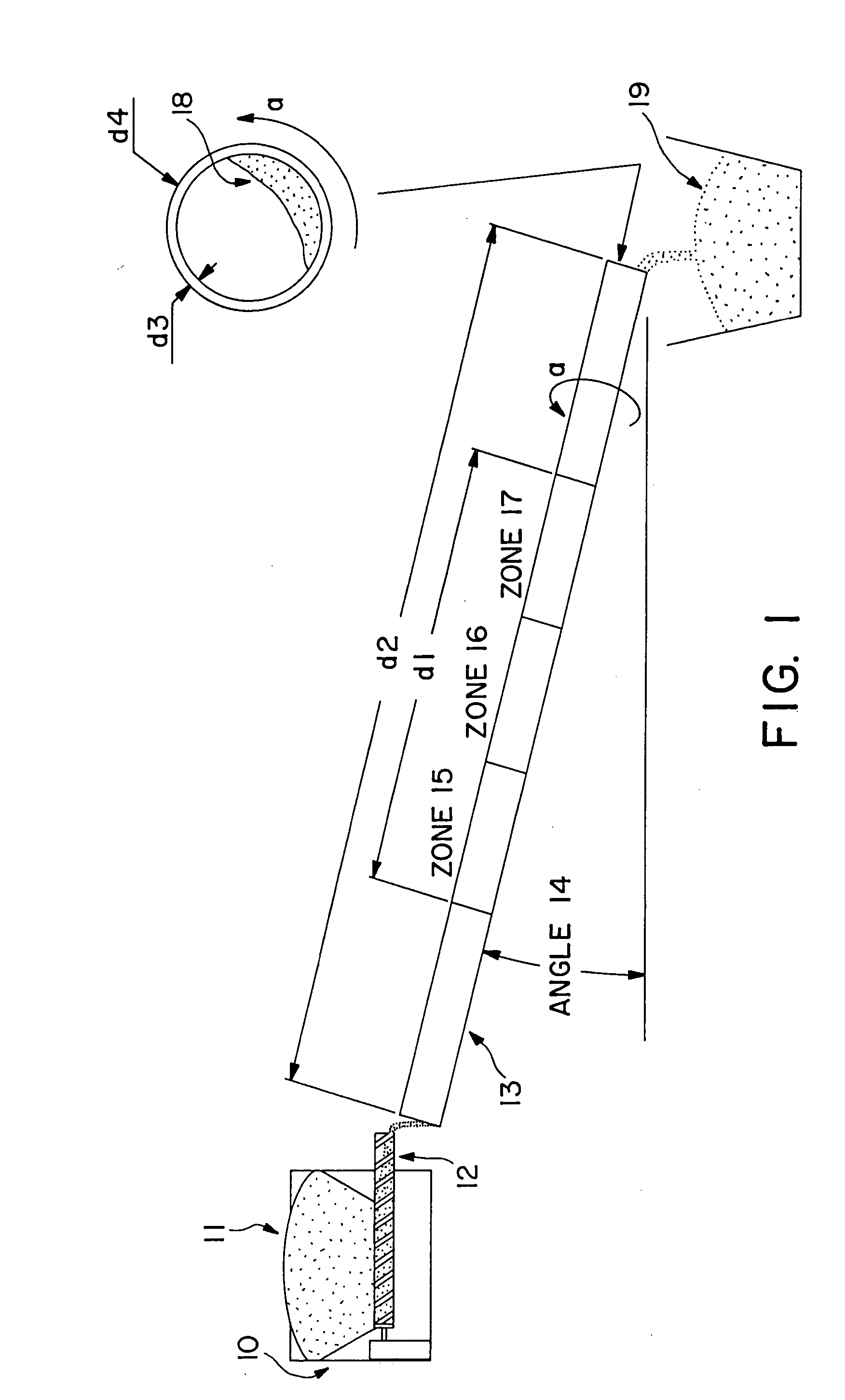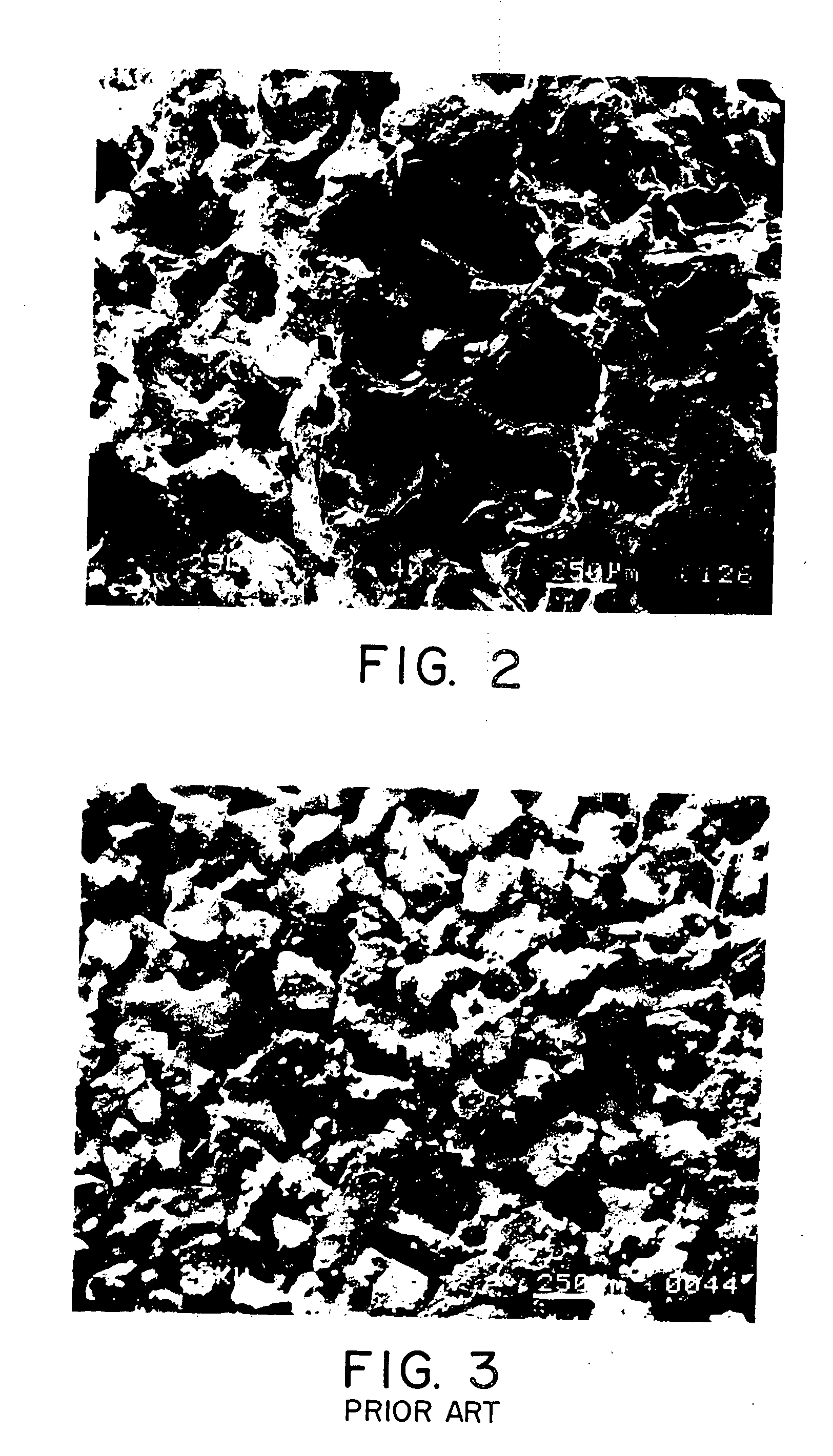Porous abrasive articles with agglomerated abrasives and method for making the agglomerated abrasives
a technology of agglomerated abrasives and porous abrasives, which is applied in the direction of grinding devices, manufacturing tools, other chemical processes, etc., can solve the problems that the pore inducers known in the art cannot achieve open channels or interconnected porosity, and the three-dimensional structure of finished abrasives is lost,
- Summary
- Abstract
- Description
- Claims
- Application Information
AI Technical Summary
Benefits of technology
Problems solved by technology
Method used
Image
Examples
example 1
[0127] A series of agglomerated abrasive grain samples were prepared in a rotary calcination apparatus (electric fired model # HOU-5D34-RT-28, 1,200° C. maximum temperature, 30 KW input, equipped with a 72″ (183 cm) long, 5.5″ (14 cm) inner diameter refractory metal tube, manufactured by Harper International, Buffalo, N.Y.). The refractory metal tube was replaced with a silicon carbide tube of the same dimensions, and the apparatus was modified to operate at a maximum temperature of 1,550° C. The process of agglomeration was carried out under atmospheric conditions, at a hot zone temperature control set point of 1,180° C., with an apparatus tube rotation rate of 9 rpm, a tube incline angle of 2.5 to 3 degrees, and a material feedrate of 6-10 kg / hour. The apparatus used was substantially identical to the apparatus illustrated in FIG. 1. The yield of usable free-flowing granules (defined as −12 mesh to pan) was 60 to 90% of the total weight of the feedstock before calcination.
[0128] ...
example 2
[0139] Additional samples of agglomerates were made utilizing various other processing embodiments and feedstock materials.
[0140] A series of agglomerates (sample nos. 10-13) were formed at different sintering temperatures, ranging from 1100 to 1250° C., utilizing a rotary calcination apparatus (model #HOU-6D60-RTA-28, equipped with a 120 inch (305 cm) long, 5.75 inch (15.6 cm) inner diameter, {fraction (3 / 8)} inch (0.95 cm) thick, mullite tube, having a 60 inch (152 cm) heated length with three temperature control zones. The apparatus was manufactured by Harper International, Buffalo, N.Y.). A Brabender feeder unit with adjustable control volumetric feed-rate was used to meter the abrasive grain and binding material mixture into the heating tube of the rotary calcination apparatus. The process of agglomeration was carried under atmospheric conditions, with an apparatus tube rotation rate of 4 rpm, a tube incline angle of 2.5 degrees, and a feed rate of 8 kg / hour. The apparatus use...
example 3
[0146] Agglomerates (sample nos. 14-23) were prepared as described in Example 2, except the temperature was maintained constant at 1000° C., and a model #KOU-8D48-RTA-20 rotary calciner apparatus, equipped with a 108 inch (274 cm) long, 8 inch (20 cm) inner diameter, fused silica tube, having a 48 inch (122 cm) heated length with three temperature control zones, was used. The apparatus was manufactured by Harper International, Buffalo, N.Y. Various methods were examined for preparation of the pre-fired mixture of grain and binding material. The process of agglomeration was carried under atmospheric conditions, with an apparatus tube rotation rate of 3 to 4 rpm, a tube incline angle of 2.5 degrees, and a feed rate of 8 to 10 kg / hour. The apparatus used was substantially identical to the apparatus illustrated in FIG. 1.
[0147] All samples contained 30 lbs (13.6 Kg) abrasive grain (the same grain used in Example 2, except that sample 16 contained 25 lbs (11.3 Kg) of 70 grit Norton SG® ...
PUM
| Property | Measurement | Unit |
|---|---|---|
| Temperature | aaaaa | aaaaa |
| Temperature | aaaaa | aaaaa |
| Temperature | aaaaa | aaaaa |
Abstract
Description
Claims
Application Information
 Login to View More
Login to View More - R&D
- Intellectual Property
- Life Sciences
- Materials
- Tech Scout
- Unparalleled Data Quality
- Higher Quality Content
- 60% Fewer Hallucinations
Browse by: Latest US Patents, China's latest patents, Technical Efficacy Thesaurus, Application Domain, Technology Topic, Popular Technical Reports.
© 2025 PatSnap. All rights reserved.Legal|Privacy policy|Modern Slavery Act Transparency Statement|Sitemap|About US| Contact US: help@patsnap.com



